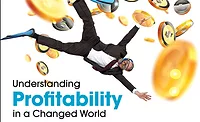Leading Your Property Restoration Business in a Post-Pandemic World
3 Keys to a Culture That Attracts Top Talent

Photo credit: VioletaStoimenova/ E+ via Getty Images
Whether your business, employees and customers were significantly impacted by the COVID-19 pandemic or not, it’s a different world. In some sense, things will return to normal. In others, life and work will never be the same.
As before, the most critical element in business is your people. Recent studies show that approximately 27% of employees plan to leave their current place of employment as soon as circumstances with the pandemic allow. Now, more than ever, it’s a “buyer’s market” for labor with workers having the power to choose the organization, culture and job opportunity they want to “buy.” Your task is to be sure that your business entices the right employees to want to buy it over others.
The effects of the pandemic will take many forms in the work world, among them being people working remotely; employee policies regarding safety, personal protection and vaccinations; and many choosing to retire or pursue other interests. One element I believe will become an even more critical part of your ability to attract and retain high-performing people is culture. It is the personality of your business, the way you communicate, work, make decisions and generally treat each other. As I view it, there are three factors that are now more important than ever in creating a culture that is attractive to the people who will help you achieve your organization’s goals.
Trust
For trust to develop, employees (and managers on a leadership team for that matter) must feel safe to express themselves. They must feel safe feeling vulnerable. Asking for help is an example of expressing vulnerability. When someone asks for help in an organization with a culture of trust, they do so with the confidence that their boss or their coworkers will be there to support them. In this kind of environment, employees feel like their leaders have their best interests at heart.
When employees feel this level of trust and consistently see it in action, they are much more likely to take issues to their boss, the owner or someone in a position of leadership rather than voicing their complaints to other employees. We’ve all seen the damage that this internal poisoning can do to morale, employee engagement and turnover. In an environment of trust, team members admit weaknesses and mistakes. Responses to problems are not focused on placing blame, but on understanding the cause and eliminating it so the issue won’t reappear.
The who’s-to-blame culture is typically characterized by a strong focus on short-term results and performance versus a longer view rooted in ensuring that employees and customers remain inspired to continue contributing. This long-term approach welcomes the disruption of change and the challenge to be transformed by it, with leaders asking their people to help them figure out how to move toward a more successful future.
Communication
Especially if you have employees working remotely, but even if you don’t, keeping employees engaged and motivated relies on continuous, effective communication. So much of what we see with stagnant businesses — those with low employee morale and those where the leaders are struggling — has to do with unclear expectations. Whether it’s tied to the company’s core values, employees’ behavior or the specific position that an individual holds, leadership’s responsibility is to be sure people know what is expected. Likewise, employees need to be candid about their goals and aspirations and the support they expect.
A healthy organizational culture includes clarity on what every person’s job is, what they are expected to do and accomplish, how their performance will be evaluated, and what authority they have to make decisions and allocate resources. Everyone in a management position should be accountable for ensuring that this clarity exists for all employees for whom they are responsible.
Following this line of thought, regular communication with employees on their actual performance —both positive and addressing areas where improvement is needed — is another sign of a healthy culture. Most importantly, communication must be two-sided. Effective teamwork combined with leaders who seek ideas and input from their people on how to address challenges will produce the most effective and accepted solutions to the wide range of issues every business will continue to face in the post-COVID world.
Be the person who consciously frees up time to talk to their people, not one who only talks to them during time that happens to be free.
Diversity
The past year and a half brought to light many new areas where there is diversity of thought among employees and people in general. Many of our current issues magnify differences in life experiences, priorities and expectations that we’ve come to recognize in dealing with the different generations that make up our workforce. This diversity of thought will serve to both create additional challenges and offer insights into potential solutions.
Don’t overlook the fact that this diversity of opinions, ideas and perspectives lives in your customers too. They have likely been affected by the pandemic and have responded in a variety of ways. People’s thoughts about personal freedoms, trust in government, and beliefs regarding the benefits and risks of medical treatments may create opportunities for conflict.
Your challenge is to leverage this diversity of thought. Whether in finding solutions that work in the post-pandemic world or understanding and satisfying customers, staying ahead of competitors and reaching your organization’s goals, the variety in thought processes and ideas your people bring should be valued and encouraged.
Your organization has a diversity of team members and it’s important that your culture empowers the individual and is inclusive to the whole. Culture is about creating a space where every employee can find their place and ways to make an impact for the organization.
At the end of the day, your culture truly relies on your leaders to bring it together. Whether or not you realize it, your people watch your leaders constantly, paying attention to what they say and do, the things and people they recognize, hiring decisions, budget decisions and everything else. The actions of leaders are reflections of your culture.
Business leaders will find a variety of ways to move forward regarding culture in the months and years to come. However this happens, it’s important to remember to listen with empathy, creating a place where employees can share their stories and opinions without fear of judgement, fostering trust and compassion. Gather the collective voice of your people. Communicate in ways that encourage them to share. Comparing the feedback you get with your current culture should provide clarity on where you are and where you need to go. Lastly, create conditions where the conversations you have lead to creative and innovative solutions based on input from across your diverse employee population.
Looking for a reprint of this article?
From high-res PDFs to custom plaques, order your copy today!






